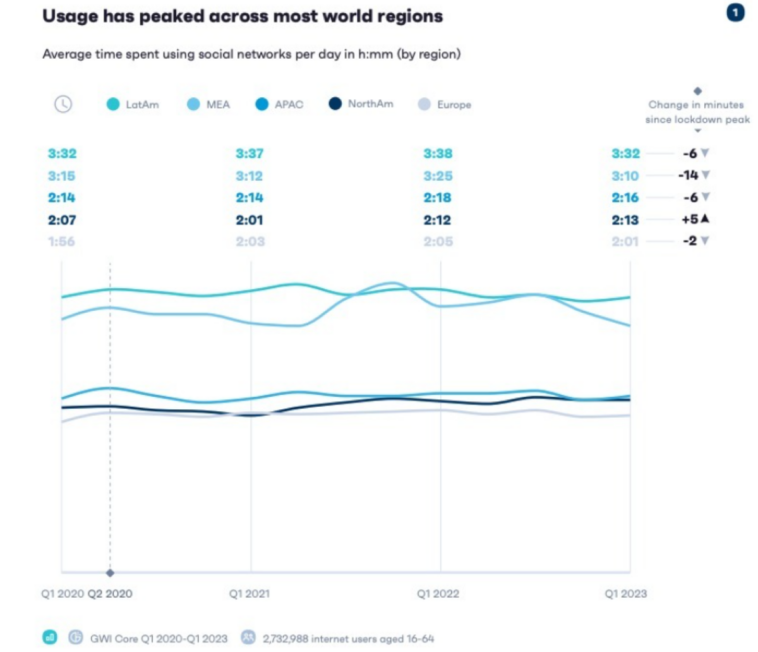The latest report on social media trends by GWI has revealed a significant shift in global social media usage. Daily time spent on social media has decreased in 36 out of 48 markets tracked since 2022. This marks only the second year-on-year decline since tracking began in 2012, indicating that social media usage may have reached a plateau.
While some emerging regions have experienced fluctuations, most regions have seen minimal changes in daily usage over the past three years. Notably, North America is an outlier, with usage continuing to rise beyond its lockdown peak.
Despite this decline, Gen Z stands out by spending an average of 2 hours and 51 minutes on social media daily, surpassing older generations. However, Gen Z is now expressing concerns about their social media usage, with 30% aiming to reduce their time spent online in 2023. This demographic is the only one to have experienced a decrease in daily time spent on social media since Q1 2021.
Changing consumer motivations for using social media are also noted. Western consumers, including baby boomers, are diversifying their reasons for using social media. TikTok is now being used for staying informed about news and products, while Instagram’s focus is shifting from personal sharing to entertainment. Twitter (now X) is evolving with an increased emphasis on video content.
The shift towards more private profiles due to privacy concerns is impacting data access for brands, particularly among younger users. This highlights the need for brands to build trust and authentic relationships with their audiences.
In terms of content length, while short-form platforms like TikTok are on the rise, longer-form content remains prevalent, with YouTube leading the way, reaching 67% of consumers, overshadowing TikTok’s 45% reach. WhatsApp continues to be a favorite platform, especially among older age groups.
This changing landscape in social media usage suggests a need for brands and businesses to adapt to evolving consumer preferences and find new ways to engage with their target audiences.
Recognizing the significant presence of Gen Z on social media, companies are actively exploring strategies to engage with this demographic. Leading dating apps like Bumble, Grindr, and Match have introduced premium tiers tailored to Gen Z users. In a similar vein, YouTube introduced two innovative advertising options aimed at streamlining brand connections with the Gen Z audience.







Comments
Loading…